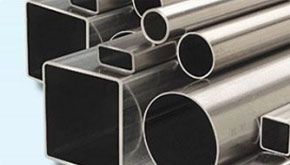The Different Types Of Flanges And Their Applications
Flanges are integral components in fluid control systems, providing a crucial link between pipes and facilitating various applications. The wide array of flange types caters to diverse operational needs, ranging from standard connections to specialized industrial requirements. Visit this website to hire the right flanges supplier for your business needs.
Weld neck flanges:
Weld neck flanges are known for their extended neck, facilitating a smooth transition from the pipe to the flange. This design provides structural integrity and helps reduce stress concentration in high-pressure applications. Weld neck flanges are suitable for critical conditions where strength and durability are paramount.
Slip-on flanges:
Slip-on flanges are characterized by their easy installation, slipping over the pipe and then welding in place. They are cost-effective and ideal for applications where frequent disassembly is not required. However, slip-on flanges may not be as suitable for high-pressure systems compared to weld neck flanges.
Socket weld flanges:
Socket weld flanges have a socket-shaped end that accommodates the pipe, followed by fillet welding. These flanges are suitable for smaller sizes and systems with moderate pressure and temperature requirements. The socket weld design ensures a robust connection, minimizing the risk of leakage.
Lap joint flanges:
Lap joint flanges feature a two-part design comprising a flat, circular plate and a loose backing flange. This allows for easy alignment and assembly, making them suitable for systems requiring frequent dismantling. Lap joint flanges are particularly useful in applications where quick and efficient maintenance is essential.
Threaded flanges:
Threaded flanges have internal threads that allow them to be screwed onto the pipe. They are commonly used in low-pressure applications and are easy to install. Threaded flanges are suitable for smaller pipe sizes and environments where welding is not preferred.
Blind flanges:
Blind flanges serve the purpose of closing the end of a pipe system. They are used when future expansion or maintenance is anticipated, providing a sealed termination point. Blind flanges are essential in preventing the flow of fluids and are commonly employed in piping systems where temporary or permanent closure is necessary.
Orifice flanges:
Orifice flanges are designed to facilitate the measurement and control of fluid flow. They feature a small opening, or orifice, which accommodates flow measurement devices. Orifice flanges are crucial in industries where accurate measurement and control of fluid rates are essential, such as in the oil and gas sector.
